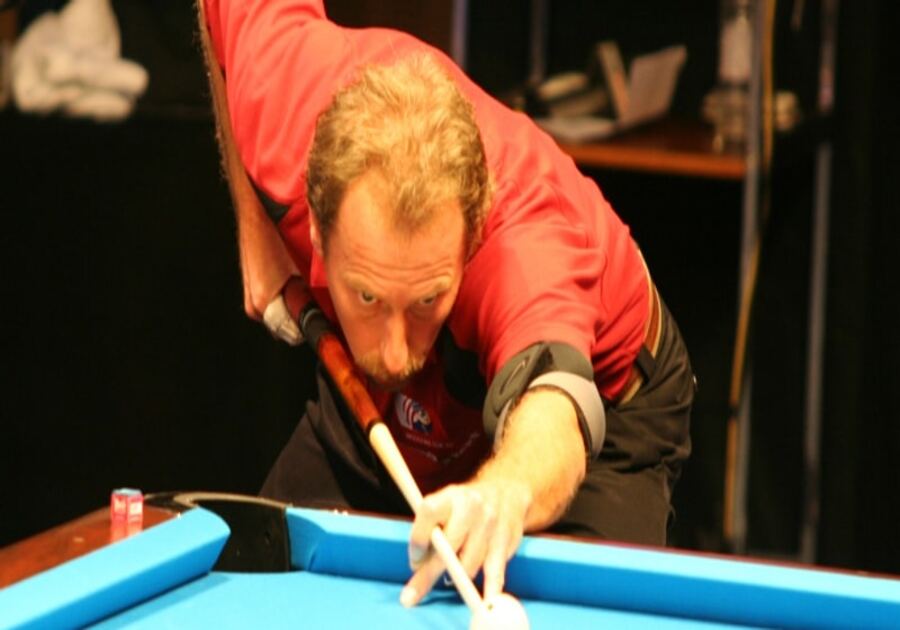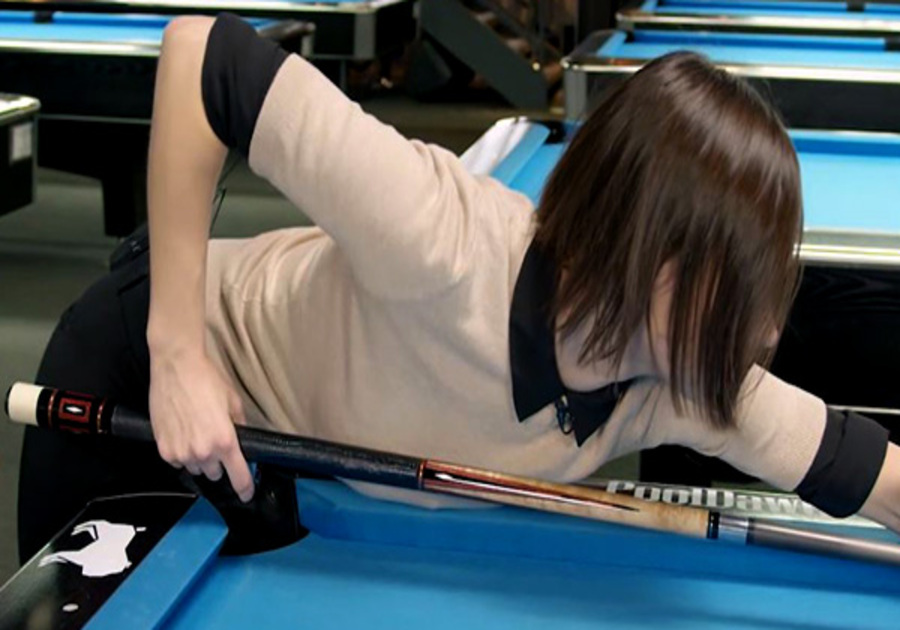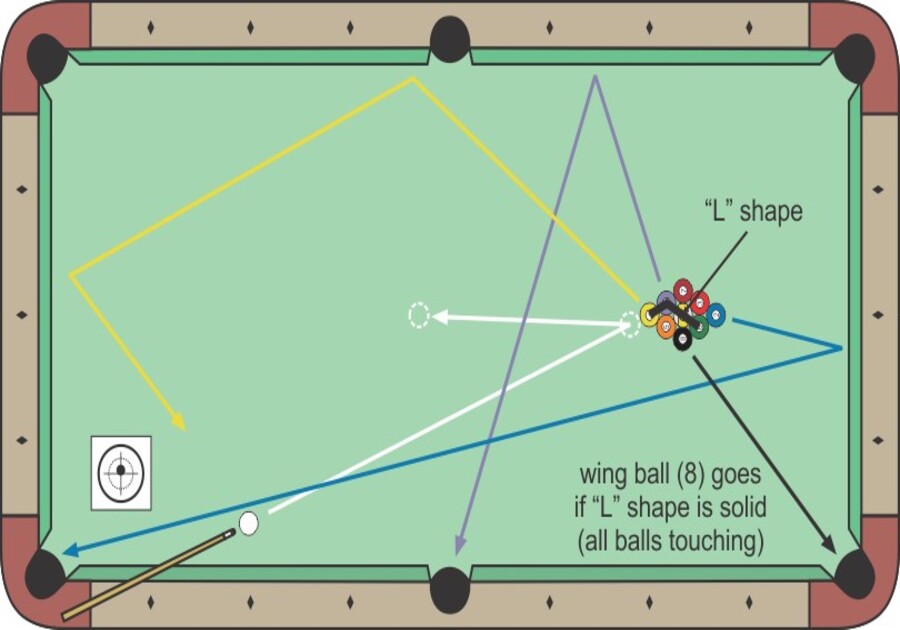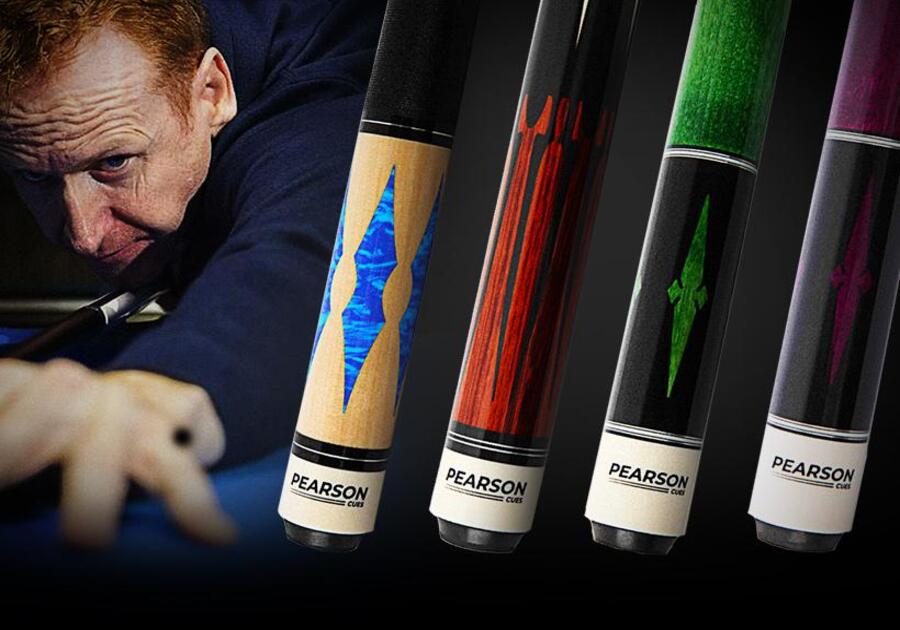How to Get Better at Pool: Techniques and Expert Tips
Key Takeaways
- A loose grip and balanced stance are fundamental to enhancing your control and accuracy in the pool. You will see how small adjustments can transform your game. Scroll down to learn more!
- Sharpening your aiming skills and refining your swing can drastically improve your shot precision. Want to discover the step-by-step guide on how to get better at pool? Keep reading for expert tips!

How to get better at pool cue
Master a Loose Grip
A common beginner mistake is holding the cue too tightly, which leads to tension and reduced accuracy. The key is to firmly grip the cue to control it without restricting your natural movement. This relaxed grip allows for a smoother stroke and better control over the cue ball.
To master a loose grip:
- Hold the cue lightly as if you were shaking hands with it.
- Your backhand should guide the cue while your front hand provides support.
- Relax your fingers and wrist to allow a smooth, natural stroke.

Master a loose grip
Perfect Your Stance
Proper stance involves positioning your feet shoulder-width apart, with your weight distributed evenly. A well-balanced stance helps maintain control and consistency. Follow these pool tips for beginners to perfect your stance:
- Stand with your feet shoulder-width apart.
- Position your dominant foot forward, aligning it with the shot.
- Bend your knees slightly for stability.
- Keep your body relaxed and your head low, aligning your eyes with the cue.
This position provides stability and ensures that your body remains still during the shot, allowing for more precise control.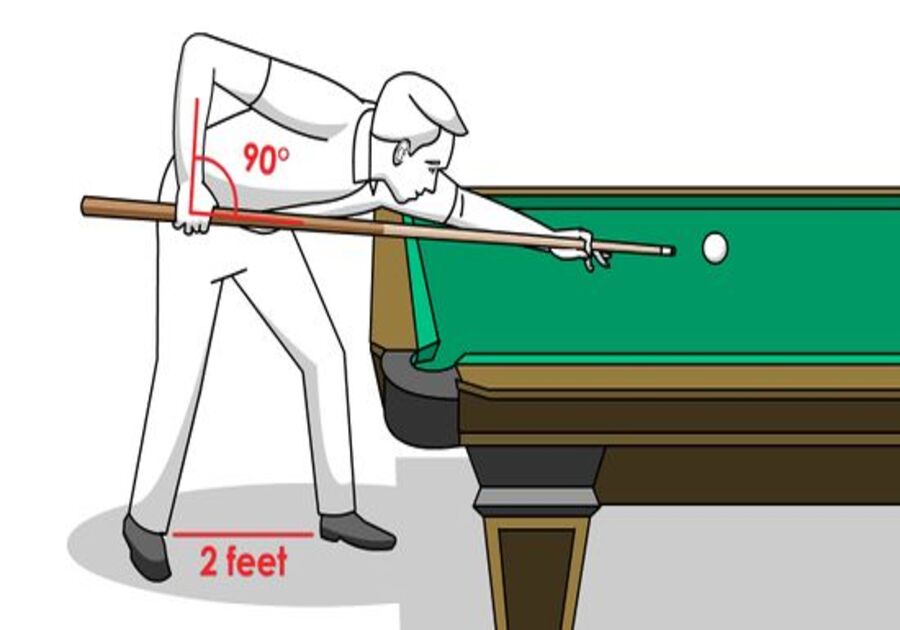
Pool stance
Hone Your Aiming Skills
If you want to learn how to get better at pool, you understand how to hone your aiming skills. It includes 3 steps:
Understand Shot Alignment
Accurate aiming is the cornerstone of successful pool playing. Understanding shot alignment involves visualizing the path of the cue ball and the object ball. Align your body and cue with this imaginary line, ensuring your eyes are directly over the cue stick for better accuracy.
Focus on the Point of Contact
To make a successful shot, you must focus on the exact point where the cue ball should strike the object ball. This point of contact determines the direction the object ball will travel. Practice hitting this spot consistently to improve your accuracy.
Utilize the “Ghost Ball” Method
The “Ghost Ball” method is a popular aiming technique where you visualize an imaginary ball (the ghost ball) positioned where the cue ball needs to be to make the shot. By aiming to hit the ghost ball, you can better judge the necessary angle and contact point to sink the object ball.
Refine Your Swing Technique
Your swing should be a straight back-and-forth, with your elbow as a hinge. Refining your swing technique can significantly enhance your performance:
- Keep your backswing slow and controlled.
- Accelerate smoothly through the shot, following through with your cue.
- Avoid jerky or abrupt movements, which can throw off your aim.
Enhance Your Bridge Techniques
Understanding some bridge techniques will help you learn how to get better at pool. The bridge is your hand’s position on the table, supporting the cue stick. There are several types of bridges, each suited to different situations.
Open Bridge
The bridge is the hand position that supports the cue during a shot. To create an open bridge:
- Place your hand flat on the table.
- Lift your thumb to create a groove for the cue.
- Position the cue in the groove, ensuring it moves smoothly.
Closed Bridge
The closed bridge offers more control and is often used for more advanced shots. To form a closed bridge:
- Make a fist with your hand, leaving space between your thumb and index finger.
- Position the cue between your thumb and index finger, securing it in place.
- Use the closed bridge for shots requiring extra precision.
This bridge provides additional stability, especially for powerful or spin shots.
Elevated Bridge
An elevated bridge is used when the cue ball is close to another ball, requiring a higher angle. To execute an elevated bridge:
- Raise your bridge hand, forming a V-shape with your thumb and index finger.
- Rest the cue in the V-shape, elevating it above the obstruction.
- Practice this bridge to handle tricky shots with ease.
Rail Bridge
The rail bridge is essential when the cue ball is near the rail. Place your hand on the rail with your fingers hanging over the edge, using the rail to support your cue. This technique helps maintain stability when shooting along the rail.
Mechanical Bridge
The mechanical bridge, or rest, is used when the cue ball is out of reach. Place the bridge on the table and rest your cue in the grooves to stabilize your shot. Practice using the mechanical bridge to ensure you can handle difficult shots with ease.
Perfect Your Break Shot
A good break can give you a significant advantage by sinking balls early and positioning others favorably. To improve your break shot:
- Use a wide stance for stability.
- Aim for the head ball (the front ball in the rack).
- Apply a controlled, powerful stroke, focusing on accuracy.
- Practice different break pool techniques to understand what works best for you.

Breakshot
Utilize Pool Chalk Effectively
Chalking your cue tip is essential for maintaining control and preventing miscues. To form a closed bridge:
- Make a fist with your hand, leaving space between your thumb and index finger.
- Position the cue between your thumb and index finger, securing it in place.
- Use the closed bridge for shots requiring extra precision.
Regularly inspect your cue tip for wear and keep it properly shaped to maximize chalk effectiveness.
Focus on Post-Shot Follow-Through
After striking the cue ball, continue the motion of your stroke smoothly and naturally. This ensures that your shot remains true and reduces the chances of unintended spin or misdirection. Practice your follow-through to improve a consistent and effective shooting technique.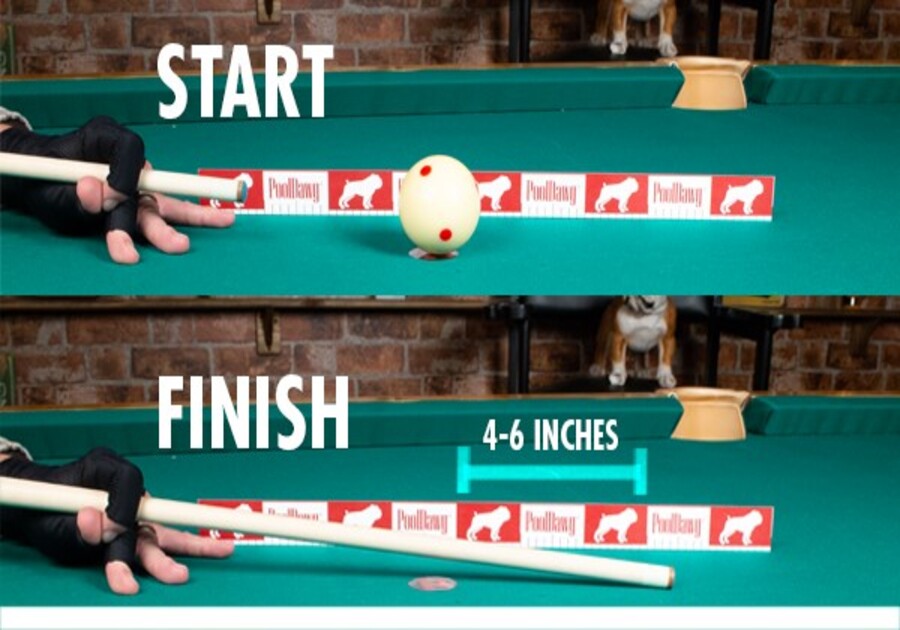
Post-shot follow-through
Learn to Read Angles
Understanding angles is crucial for positioning and making successful shots. Practice visualizing the angles at which balls will rebound off the cushions.
Use the diamond system on the table to help gauge these angles and improve your ability to predict ball paths. The more you practice, the better you’ll become at reading angles and making precise shots.
Choose the Right Pool Cue
Selecting the right pool cue is essential for improving your game. Consider the following factors when choosing a cue:
- Weight: Most cues weigh between 18 and 21 ounces. Choose a pool cue weight that feels comfortable and balanced in your hand.
- Length: Standard cues are 58 inches long, but you can find shorter or longer cues to suit your height and playing style.
- Tip: The tip diameter affects your control and spin. Smaller tips (11-12mm) offer more spin, while larger tips (13mm) provide more control.
- Material: Pool cues can be made from various materials, including wood, fiberglass, and graphite. Choose a material that offers the right balance of flexibility and durability for your playing style.

High-quality pool cues from Pearson Cues
Invest in Quality Pool Cues and Equipment
Some final pool tips and tricks for how to get better at pool are to invest in high-quality pool cues and equipment. Look for cues from reputable manufacturers and consider custom cues for a personalized fit. Invest in a good cue case, chalk, and other accessories to maintain your equipment and ensure optimal performance.
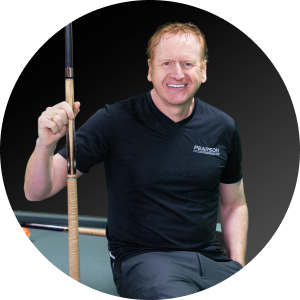
Dave Pearson
Dave Pearson, the world's leading pool entertainer, is renowned globally as the ultimate exhibition player.
Boasting 20 world records endorsed by the prestigious Guinness Book of World Records, Dave established a legendary history in the sport industry.

